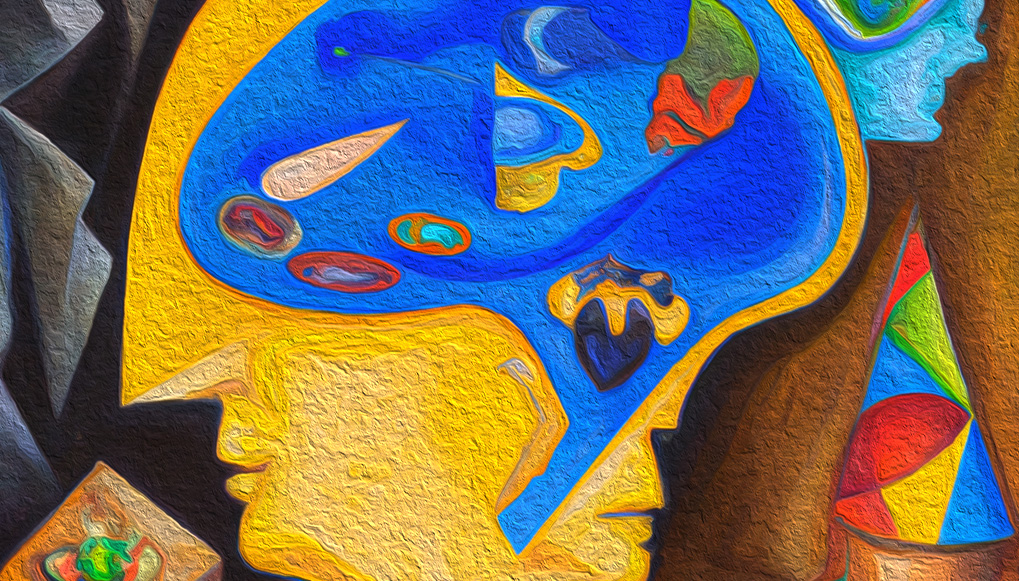
The Multimind Idea of Consciousness
Contrary to belief, we don’t possess a unified mind with a single coherent purpose. We have many minds: “multiminds.” These small minds, which the psychologist Robert Ornstein often calls, slightly jokingly, “simpletons,” all have minds and agendas of their own.
The content of this section, unless indicated, represents Robert Ornstein’s award-winning Psychology of Evolution Trilogy (God 4.0, The Evolution of Consciousness and The Psychology of Consciousness) and Multimind. It is reproduced here by kind permission of the Estate of Robert Ornstein.
Our consciousness is, by necessity, extremely limited, with only a small portion of our mental operating system “on the main stage” at any given time. That’s why our moods and judgments shift from moment to moment. Such shifts are triggered by factors such as the way in which a situation is framed and what portion of the mind is operating at a given instant. For example, you may react very differently to a political speech at a rally than if you read the text of that same speech in a more quiet, reflective state of mind. It’s also why we have such trouble achieving a real understanding of other people, much less of our own selves, and why we often work against our best interests by making misguided choices, decisions, and responses in so many areas of our lives.
Stuck side by side, inside the skin, inside the skull, are several special-purpose, separate, and specific small minds. The particular collection of talents, abilities, and capacities that each person possesses depends partly on birth and partly on experience. Our illusion is that each of us is somehow unified, with a single coherent purpose and action. But it is an illusion, as we are hidden from ourselves, just as the skin covers a lot of different organs that are only visible once the covering has been lifted.
These small minds, which the psychologist Robert Ornstein often calls, only slightly jokingly, “simpletons,” all have “minds of their own.” Each evolved to handle specific and limited situations and are all bunched together inside the mind. They seem to run themselves, without—or outside of—consciousness.
These “simpletons” have “talents” that range widely, because all organisms, especially human beings, have to do many different things at once. Some talents are standard features, such as the memory for odors; some are higher level and require training, such as calculating the trajectory of a comet. The most basic of the talents concern immediate survival; the more complex concern adapting to the world as it changes; and the most elaborate concern the ability to reason and the sense of the self. There are specialized talents for memory, for movement, for mathematical ability, for decoding and producing speech, for sensory analysis, and much more. All of these talents seem to have independent minds with different priorities, often acting without the awareness of the weak conscious self.
As members of a team, talents may get called onto the field. The abilities of space and logic are needed to run an architectural business. The emotional and the movement talents may combine in expressive dance. The protective aspects of the emotions and logic may join to form paranoia. We can think of hundreds of likely combinations. The lack of a talent may be crucial. The underdevelopment of certain kinds of emotional reactions may contribute to antisocial behavior, even criminality. Talents are one of the important basic units of the mind’s operations.
Why are some of the things we do so unacceptable to ourselves? It is because we are not single-minded: the part of our self that is often judging is independent from the part that is behaving.
We are not a single person.
We are many.
Each one of us is a crowd.
We often assume that our own mind is a reasonable and stable, somewhat solid device. It is not. It moves, it careens from one idea or mood to another, and it is surprisingly inconsistent and unstable. There is no single mind but many; we are a coalition—a multimind.
It should not be surprising that we possess such a simplified understanding of ourselves because, as we said earlier, the mind operates to simplify. The unity we experience in our own mind—the sense that it’s the same “me” that loves as reasons; it is the same “me” that is the father as the son; it is the same “me” who goes to work and plays games—is simply an illusion. It is a needed but fundamental illusion about ourselves and others. We are not consistent. We are not coherent. We do not always decide things reasonably. We are frequently unaware of how we decide and even “who” is deciding for us.
The Mind Wheels
It wheels from condition to condition, from emergency to quiescence, from happiness to concern. As it wheels among these states, different components of the mind operate. The mind is not neat: sometimes it does not wheel these “simpletons” out fast enough, so misjudgments are made. When you come home angry because your raise was rejected, you will be more likely to find fault with your spouse’s cooking, as that small mind containing the feeling reactions has not yet been wheeled out.
Some of the simpletons that get wheeled in are the result of the many diverse centers of control of the brain. These centers have developed over millions of years to regulate the body, to guard against danger, and generally to organize and plan effort. The separate mental components have different priorities and are often at cross purposes with each other and with our life today, but they do exist. “They” are us.
…we may find ourselves influenced by ideas that we know are faulty, fallacious, or fanciful. And our beliefs persist even after they have been proved wrong.
Sometimes a simpleton is unwilling to give up center stage. For example, we may find ourselves influenced by ideas that we know are faulty, fallacious, or fanciful. And our beliefs persist even after they have been proved wrong. In one study, people were asked to read information that was very damaging to a public figure. Their attitude toward the person was measured before and after they read the material. Afterward, of course, their attitude changed in a negative direction. Then they were told that the information they had just read was a mistake; it was not about that public figure at all and had been made up. Their attitudes were again assessed, and they were still more negative to the public figure than when the study began. And the change persisted for weeks! This irrational persistence of a change in attitude is due to the wheeling in of a specific small mind that begins to make apparently sensible connections and simplifies a view of a person or the world.
We are not consistent: one part of our mind may say something and mean it but become overwhelmed by another small mind. This does not mean that we are untruthful but that a different part has become active.
In truth, we do not know ourselves or each other. Our view of others is partial, oversimplified. We use simplifying strategies like their traits and race and categorize them. We pass each other like ships in the night; we send out a small and partial signal to each other, and we receive it with a part of our minds. We are not able to know others completely in all their complexity. And our own selves are hidden from us as well.
The multimind idea explains (or, perhaps, describes) why we have so many conflicting thoughts about ourselves, about the nature of specific people in our lives, and about human nature itself. It explains why we ask: Why can’t I control myself? Do I love him or hate him? Is she a good person or not? Are human beings beasts or angels?
There are, of course, many other abilities and portions of the mind that do not seem to be covered by the multimind metaphor, such as creativity and intuition, which we will talk about later.
But for day-to-day actions, it’s a question of who is running the show. In most people, at most times, the simpletons get wheeled in, most likely on the automatic basis of blind habit.
But there is a point when a person can become conscious of the multiminds and begin to run them rather than hopelessly watch anger or some other ‘simpleton’ wheel in and take over once again.
Self-observation: Taming the Simpletons
Are we prisoners of our archaic mental operating system and helpless to the whims of our simpletons?
Knowing that there are different selves shifting in and out allows us to observe the automatic reactions of our mind. We can learn to observe the automatic selection of a given set of simpletons and observe which factor—external, food, personal, social, environmental—is really causing a given reaction. Once we know what is bothering us, we may be able to change.
The observing mind is probably a dormant faculty in most people because there is usually little reason to notice that there are multiminds taking control at any time. We can develop it by first observing the alternations, gradations, and changes that “come over” us, then noting that it is not always necessary to accept the “simpleton” that is “automatically” called up in a situation.
The antics of characters in stories, such as the traditional tales of Mulla Nasrudin, can be a great help in identifying parts of ourselves that wheel in and out of consciousness.
With self-observation, the mind begins to change, and the fixed links between action and reaction loosen, leaving room for choices and redirection of the mind. Increasing self-observation and less self-centeredness are part of normal psychological development. In order to develop our potential—the latent capacity of mind we will refer to later—attaining a genuine measure of understanding and control of our wheeling and dealing mental system is a practical necessity.
One important implication of the multimind metaphor is that people may be able to recognize that they and others may have a great many different talents and abilities. With their development, they may well be more able to respond to life as it really is, not as we would reduce it to fit one small-minded view.
As Robert Ornstein noted in Multimind,
We have a mental system, comprising many diverse, even warring small minds, that seeks to keep things simple and consistent, and it has brilliantly evolved a few major strategies to guide us through conditions that were appropriate for our ancestors. But these simple strategies, and our self-deception that we are whole, stable, rational thinkers, are often at the root of many personal, social, and political problems.
It is the judgmental part of the multimind that particularly needs to catch up. It is quite unfortunate that we must judge everything using these almost automatic policies of mind, but I hope that elucidating the many mechanisms and the many different distortions and results will help us face our multiple minds and our limited mechanisms of judgment.
Perhaps we will start to become conscious of our limitations and begin to change.

